The Boeing 747 was in service with British Airways (including its predecessor, the British Airways Overseas Corporation (BOAC)) for almost 50 years. The history of British Airways’ 747 began in 1970, before BOAC merged with British European Airways (BEA) to form British Airways.
Back in 1966, BOAC were considering options to replace the Vickers Super VC10 in its long-haul fleet and to increase capacity for an expected growth in passenger numbers during the 1970s. The possibilities included increasing the number of Boeing 707-320s, or acquiring the Boeing 707-436 or the Douglas DC8-63 series or the proposed Superb VC10 (Super Super VC10), a project which never left the drawing board, or investing in Boeing’s potential new aircraft which was still at the development stage, the 747. In May 1966, the BOAC Board approved the purchase of six 747s, with an option for a further ten aircraft. The potential for the 747 to accommodate up to 400 passengers and carry a substantial amount of cargo below the main deck were important factors in the Board’s decision.
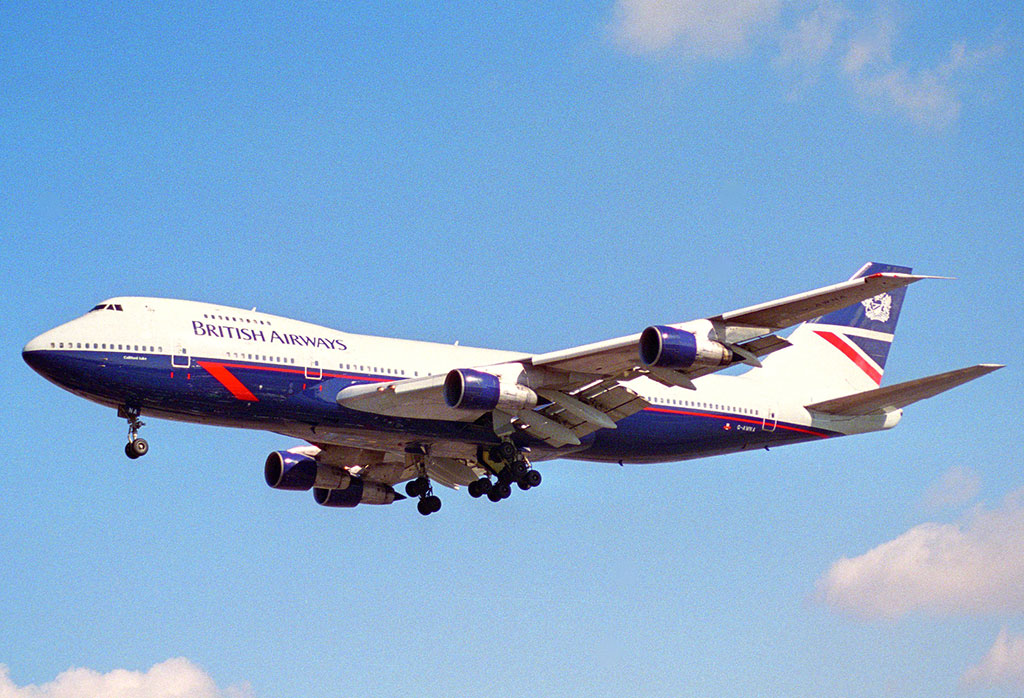
The first Boeing 747-136, G-AWNA, was delivered to BOAC in April 1970. It is seen here at London Heathrow in April 1997, painted in the Landor livery (Photo: Aero Icarus, distributed under a CC BY-SA 2.0 Licence)
The first aircraft (G-AWNA) was delivered to London Heathrow on 22 April 1970, followed by two more aircraft (G-AWNB and G-AWNC) in May and June 1970. However, a long-running industrial dispute, first with BOAC’s pilots and then with the flight engineers and cabin crew, delayed the entry of the 747 into service. This was perhaps a blessing in disguise, as the early Pratt & Whitney JT9D engines used on the 747-100 were unreliable for over a year after the aircraft’s initial certification.
BOAC began passenger services using the 747 on 14 April 1971 when G-AWNF flew from Heathrow to New York. By May 1971 this was a daily flight and over the following year the number of destinations served by the 747 gradually increased.
BOAC received thirteen 747-136s, with G-AWNM the final aircraft to be delivered in the BOAC livery. All subsequent aircraft were delivered in British Airways livery, following the combining of the BOAC and BEA management in 1972 and the final completion of the merger in March 1974. The final 747-136 (G-BDPV) to be acquired by British Airways, and the 18th in the fleet, was delivered in April 1976.
In 1975, British Airways placed an order for four of the upgraded Boeing 747-200 variant, which offered improved range and payload. These aircraft were to be powered by Rolls-Royce RB211 engines, with British Airways the launch customer for the type. Political pressure may have influenced the decision. Rolls-Royce were nationalised in 1971 following bankruptcy, which was attributed to the development costs of the RB211 engine. The 747-200 – RB211 combination provided an opportunity to regain some of the investment in the company.
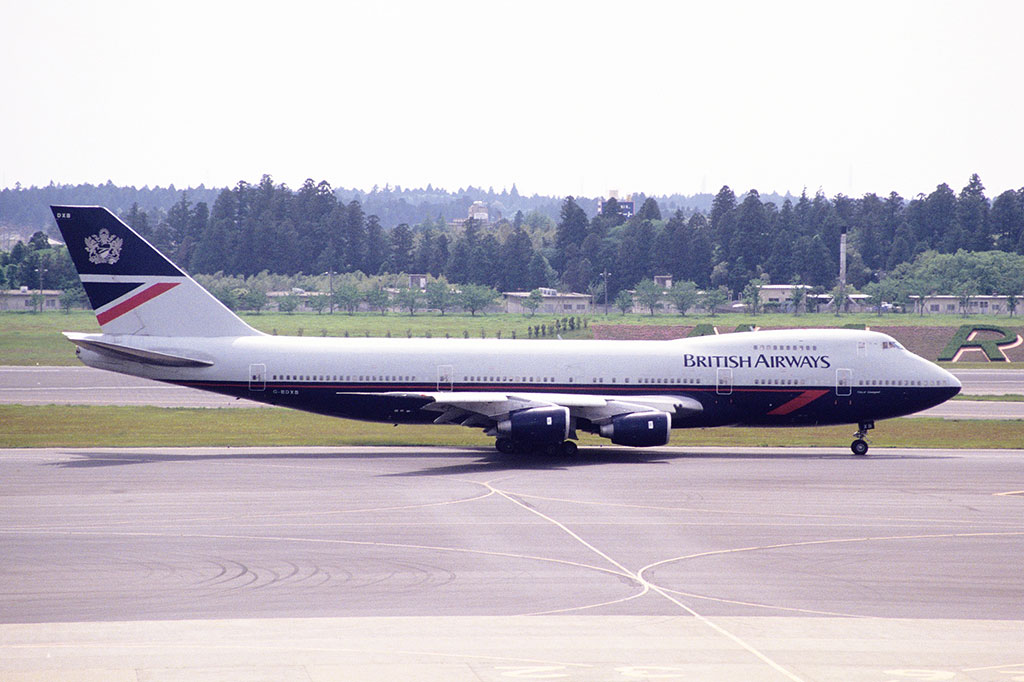
The first of the Rolls-Royce RB211-powered 747-236Bs, G-BDXB, delivered to British Airways in June 1977. (Photo: FotoNoir, distributed under a CC BY-SA 2.0 Licence)
The first Rolls-Royce powered 747-236B flew in 1976 and British Airways received its first two aircraft in June 1977 (G-BDXB and G-G-BDXC). A total of nineteen 747-236Bs were ordered. One of these was British Airways’ first all-freighter 747-236F, aptly registered as G-KILO, which was delivered in September 1980. However, due to the economic recession in the early 1980s, it was sold to Cathay Pacific in March 1982. Economic problems also led to British Airways selling two of its 747-136 aircraft (G-AWNI; G-AWNK) to TWA in March 1981, and four of its 747-236B aircraft were placed directly into storage in the US rather than being delivered, two of which were eventually sold to Malaysian Airlines. Delivery of the 747-236Bs ended in April 1988; three of the final aircraft to be delivered were a passenger /freighter ‘Combi’ version fitted with a main deck side cargo doors, although they never made use of this facility. The 747 had plenty of under-floor cargo capacity.
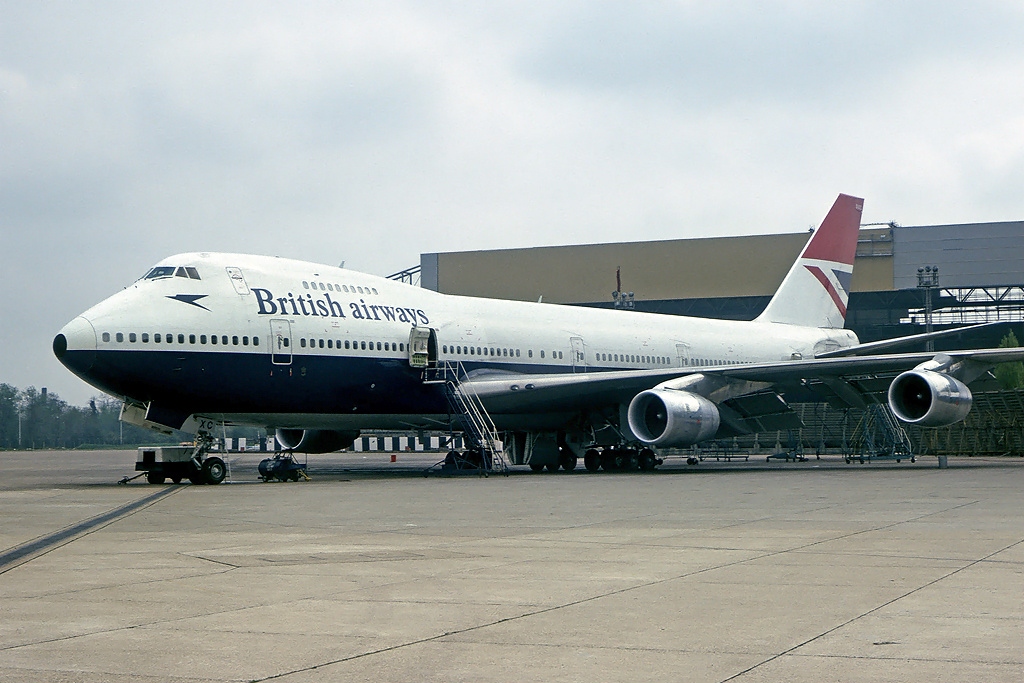
Boeing 747-236B, G-BDXC, at British Airways’ Maintenance base at Heathrow, May 1979. This was the second -236B variant to be delivered to British Airways. (Photo: Steve Fitzgerald, distributed under a GFDL 1.2 Licence)
British Airways acquired five additional 747-200s following the take-over of British Caledonian in 1987. These aircraft, fitted with General Electric CF6-50 engines, were sold off by February 1991.
In response to an increasing demand for air travel, British Airways ordered sixteen 747-400s in August 1986, plus options for a further twelve aircraft, to replace the classic 747-136 variant. The order was valued at $4.3 billion, the highest value aircraft order ever placed up to that time. The 747-400 featured a stretched upper deck and an improved longer wing with winglets. Construction of the aircraft structure featured the use of advanced aluminium alloys and carbon fibre composite materials. The flight deck and control systems were completely redesigned to incorporate improved digital avionics and automated flight management systems. The new glass cockpit allowed a two-pilot operation, removing the need for a flight engineer. Three engine options were available, with British Airways opting for the significantly improved Rolls-Royce RB211-524G powerplants.
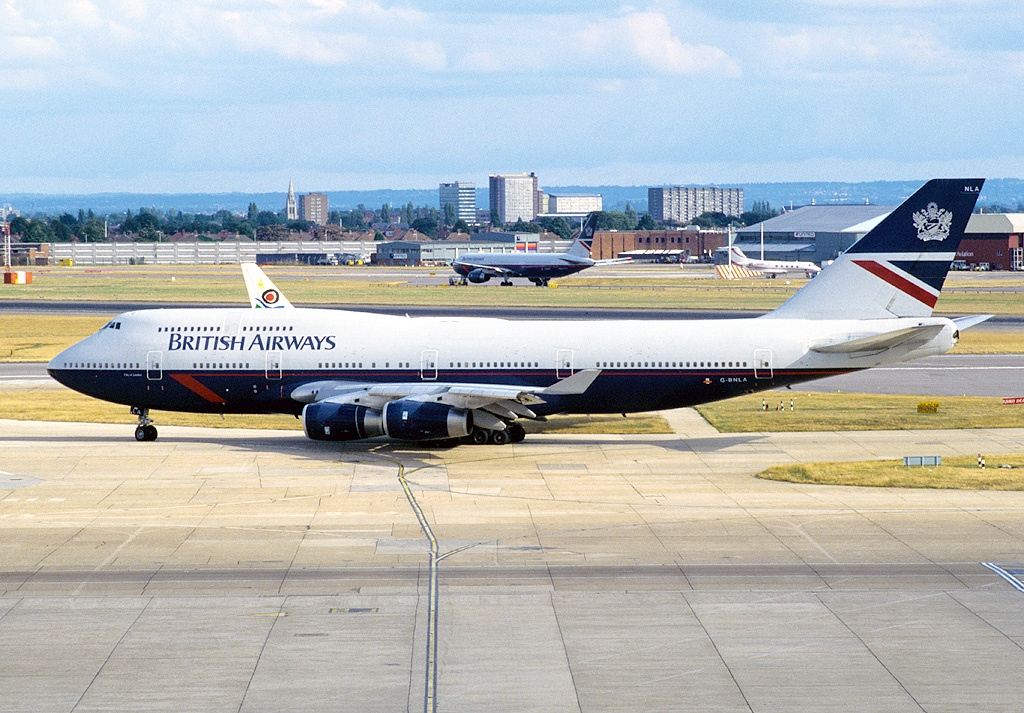
G-BNLA at LHR August 1994 (Photo: Tim Rees, distributed under a GFDL 1.2 Licence)
The first 747-436 for British Airways (G-BNLA) was delivered on 30 June 1989. The inaugural flight of a 747-436 in British Airways livery was on 27 July 1989 from Heathrow to Philadelphia and Pittsburgh. In July 1990, British Airways ordered an additional twenty-one 747-436s with options for twelve more aircraft, followed by another order for twenty-four aircraft in August 1991, bringing the total to 85 aircraft, including options. The 1990 order included a request from British Airways for a unique variant, known as the 747-400 Light Weight (Lite) in which the auxiliary horizontal stabiliser fuel tank was not connected. The resulting reduction in the maximum take-off weight allowed for an increase in payload. However, only four ‘Lite’ variants were delivered (G-CIVF; G-CIVG; G-CIVH; G-CIVI).
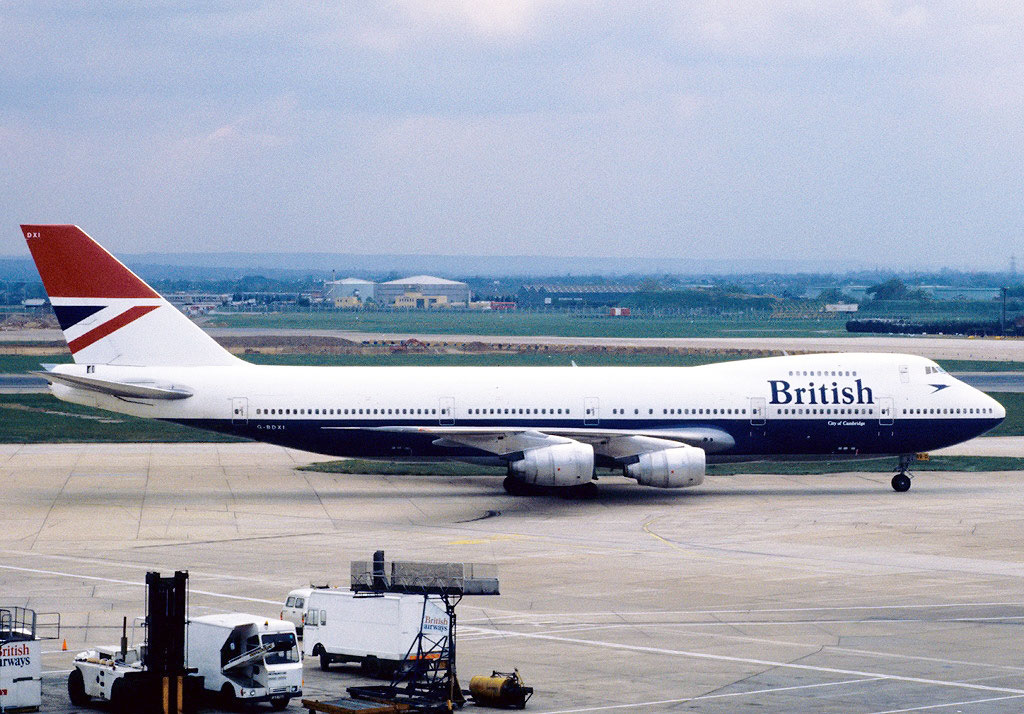
Boeing 747-236B, G-BDXI, the last 747-236B to be retired by British Airways in May 2003, shown here in the Negus livery. (Photo: Tim Rees, distributed under a GFDL 1.2 Licence)
By the end of 1992, British Airways had twenty-three 747-236Bs in service, the largest operator of that variant at the time, although the planned retirement of the 747-146s didn’t begin until the end of October 1998, with the final aircraft disposed of in January 2000. Retirement of the 747-236B aircraft started in December 1999 with the final aircraft (G-BDXI) leaving the fleet in May 2003.
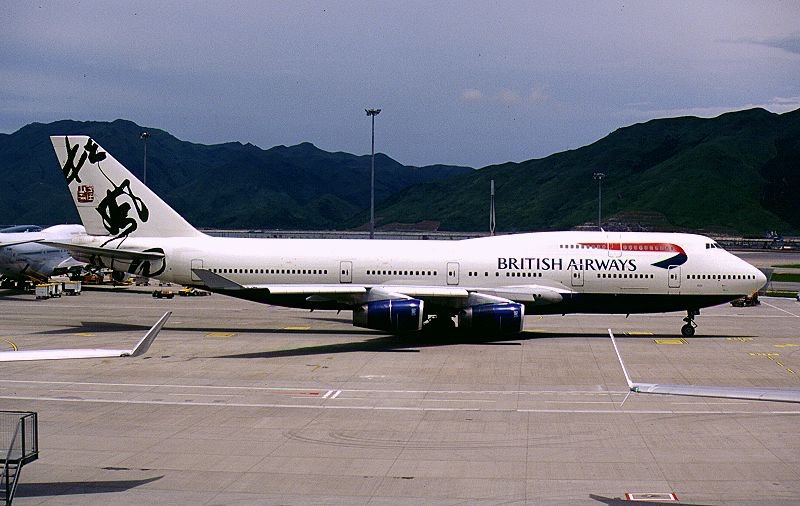
Under Project Utopia, British Airways introduced a number of ‘ethnic’ tail designs. Boeing 747-436, G-BLNR, shows off ‘Rendezvous, a version for Hong Kong. (Photo: Konstantin von Wedelstaedt, distributed under a GFDL 1.2 Licence)
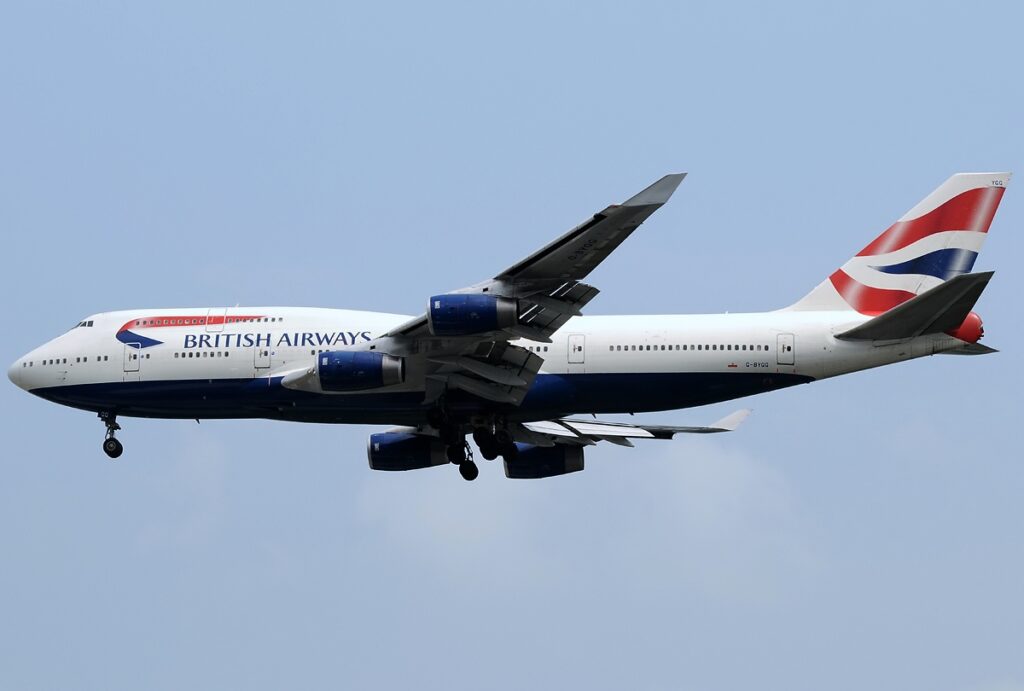
The final Boeing 747 to be delivered to British Airways, 747-436 G-BYGG approaching Singapore International Airport, January 2014. The aircraft is painted in the Chatham Historic Dockyard livery. (Photo: Aldo Bidini, distributed under a GFDL 1.2 Licence)
Delivery of the 747-436s continued throughout the 1990s, however, only seven of the final order were built. The twin-engine Boeing 777-236, first acquired by British Airways in November 1995, was proving more efficient than the 747-436. In 1998, British Airways used an order for 5 777s to replace an earlier order for 4 747-436s. Conversion of more 747 orders to the Boeing 777 soon followed. At its peak, British Airways had fifty-seven 747-436s in its fleet. The final and 57th 747-436 (G-BYGG) was delivered in April 1999. Although further competition to the 747 came from the Airbus A380, with British Airways acquiring its first A380 in July 2013, the airline continued to operate the 747-436 on long-haul services to a wide range of destinations including Boston, Chicago, Cape Town, Delhi, Dubai, Kuwait, Lagos, Las Vegas, Riyadh, Sao Paolo, Toronto and Vancouver, as well as multiple daily flights to New York.
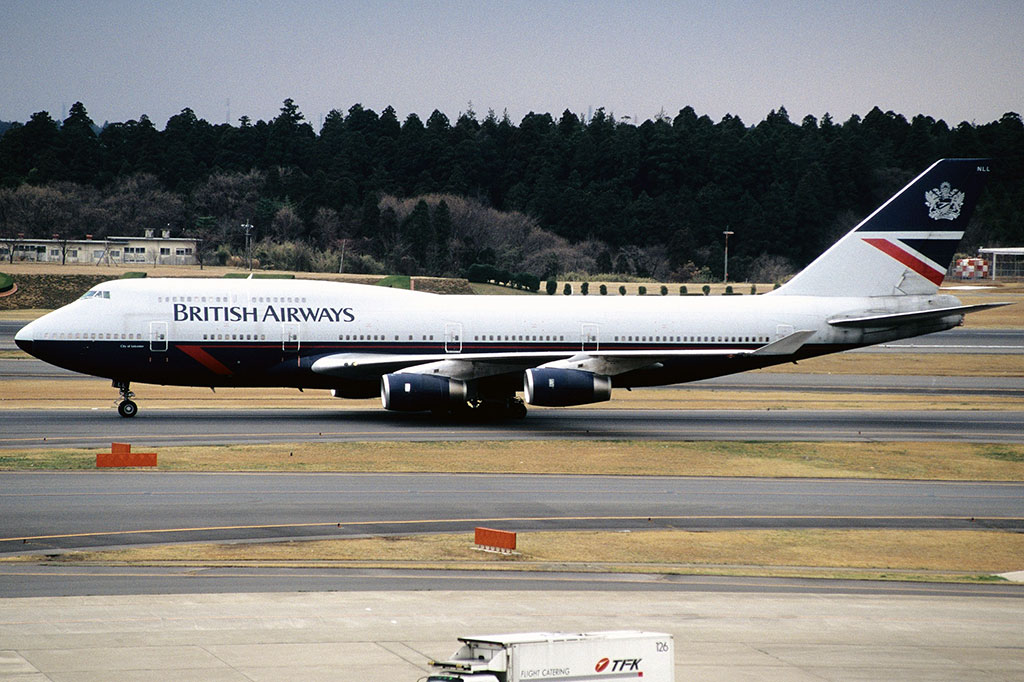
Boeing 747-436, G-BNLL (Photo: Contri, distributed under a CC BY-SA 2.0 Licence)
Whilst British Airways used the 747 predominantly for passenger services, it had two further ventures into the transport of freight. Between May 1999 and February 2012, Global Supply Systems operated several 747-400Fs on behalf of British Airways World Cargo (N491MC; N494MC; N495MC). From November 2011, Global Supply Systems operated three 747-8Fs from London Stansted Airport, painted in full British Airways World Cargo livery (G-GSSD; G-GSSE; G-GSSF). However, operations came to an end in April 2014 after British Airways decided that future transport of cargo would only take place in the hold of passenger aircraft.
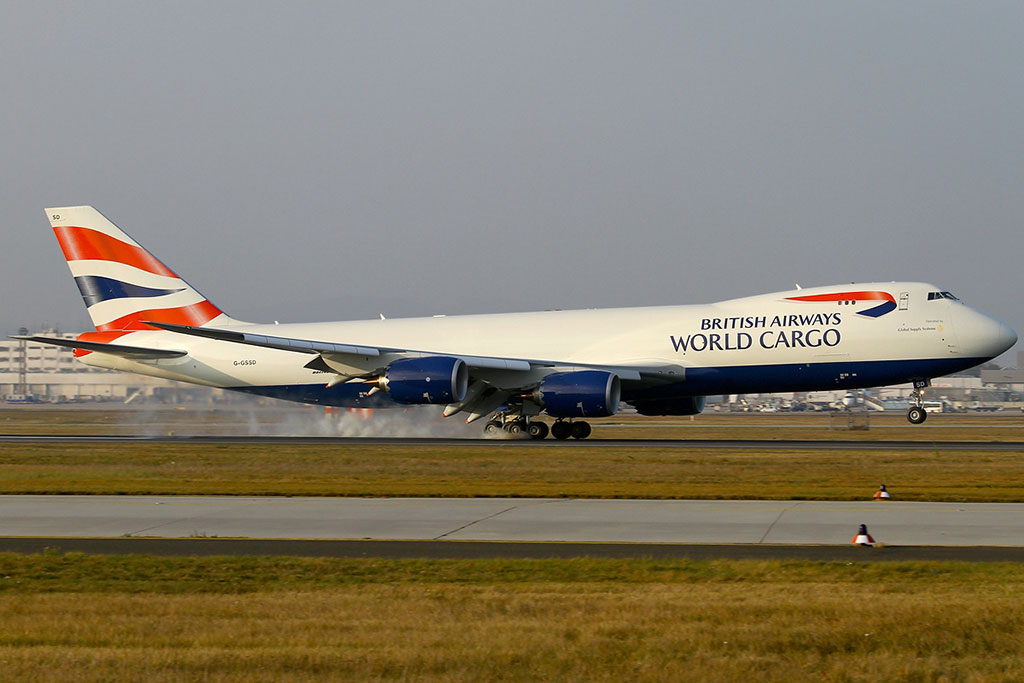
Boeing 747-8F, G-GSSD, operated by Global Supply Systems on behalf of British Airways World Cargo, at Frankfurt Airport in November 2011. (Photo: Konstantin von Wedelstaedt, distributed under a GFDL 1.2 Licence)
Retirement of some of the British Airways’ older 747-436s began in 2008, albeit in small numbers. At the start of 2020, thirty-two aircraft remained in the fleet, although there was a plan in place for a gradual phasing out of the entire 747 fleet by 2024. However, following the outbreak of the Covid-19 pandemic, British Airways quickly grounded its fleet of 747s. In July 2020, with a significant downturn in air travel as a result of the pandemic, the airline could no longer justify the retention of the large and inefficient jet in its long-haul fleet and announced the immediate retirement of its entire Boeing 747 fleet. British Airways’ final scheduled passenger flight by a 747-436 was undertaken by G-CIVB, arriving at London Heathrow from Miami on 6 April 2020.
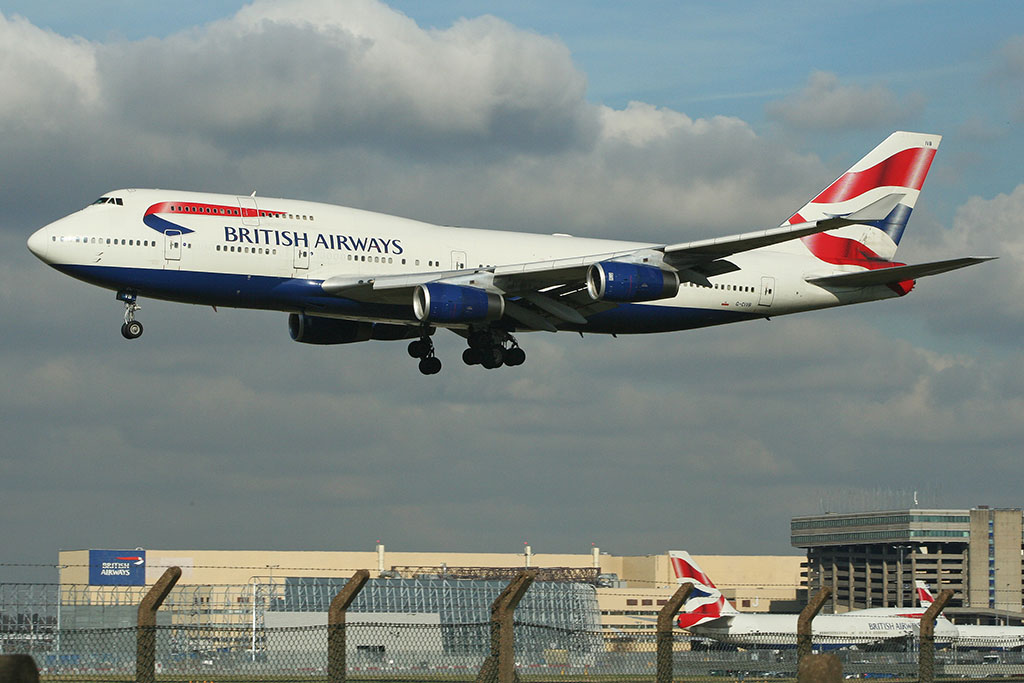
The final scheduled passenger flight by a British Airways 747 was operated by G-CIVB, seen here at London Heathrow in February 2012 (Photo: Alan Wilson, distributed under a CC BY-SA 2.0 Licence)
During its forty-nine years in service the Boeing 747 transitioned through five different liveries beginning with the BOAC scheme, followed by British Airways’ Negus livery until 1984, then Landor, twelve different ethnic art tail fin designs as part of the Project Utopia scheme and, finally, the Chatham Historic Dockyard livery.





1 comment
Back in the 1990`s, B/A flew a 747-200, under Nigeria airways, I only realized it, because at the time,(good old fashion air band radio) the air traffic controller, pointed out and told another aircraft, to give way to the B/A jumbo, in the Nigerian Airways colour scheme